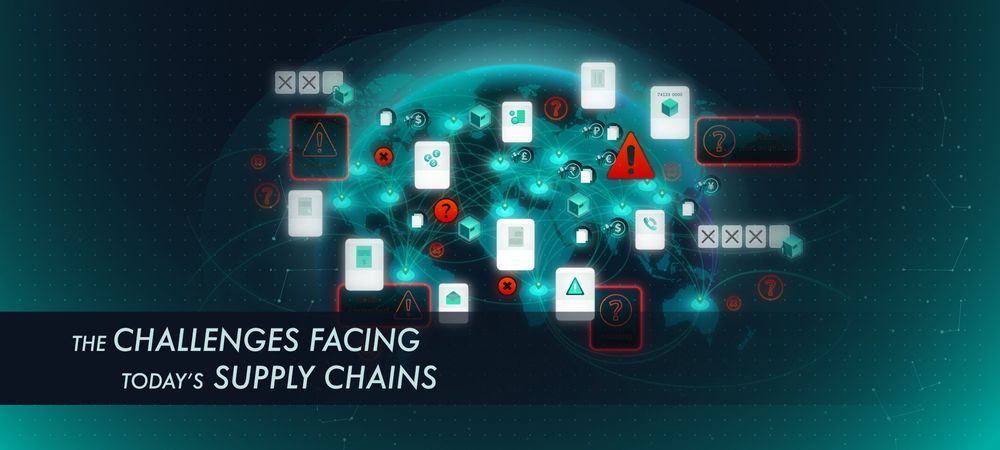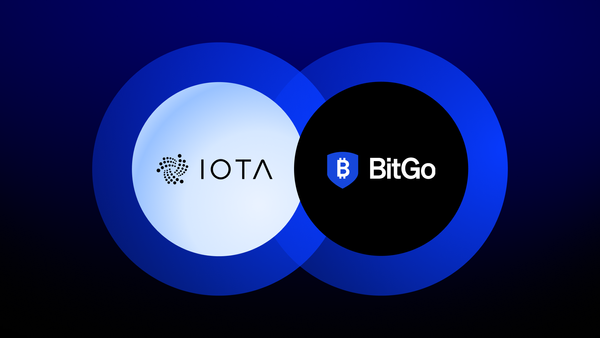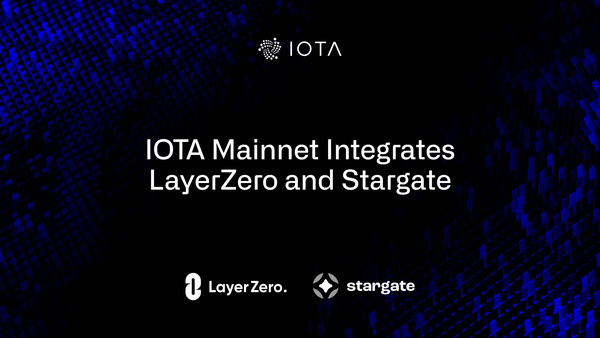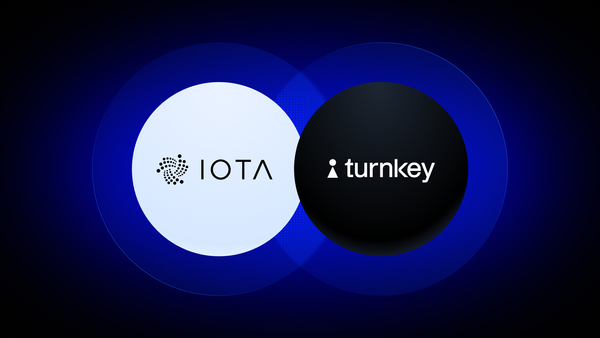The Challenges Facing Today’s Supply Chains
A large part of today’s trade is still based on paper documents and antiquated processes that slow down international trade and have a significant impact on the economy. Trucks and containers standing idle (and thus increasing CO2 emissions and pollution), cash flow tied up in goods at ports awaiting trade documents to be produced and lack of inventory visibility/status, are a few drawbacks (among many) of this disconnected system. Missing documents, inadequate global location tracking, and diluted or forfeited data, are all daily challenges facing this industry.
It is estimated that if all countries in the world increased their cross-border performance to only 50% of the world’s best, it could add 5% to global GDP. These are calculations not even including the effect of using DLT solutions across the full supply chain.

Global trade and supply chains are highly complex and involve many actors — both public and private. An enormous amount of data is produced along value chains but often only a fraction is captured and utilized. Information is often only shared peer-to-peer along the value chain as it is logged in different software systems and shared in paper copies. As a result, the original data is shortened, wrong, or misleading when reaching actors further down the chain. Rarely does the original packing list from the producer reach the Customs Authorities in an importing country. Thus making their risk assessment process slower and inaccurate.
THE SOLUTION IS INCREASING VISIBILITY & ACCESS TO ORIGINAL DATA
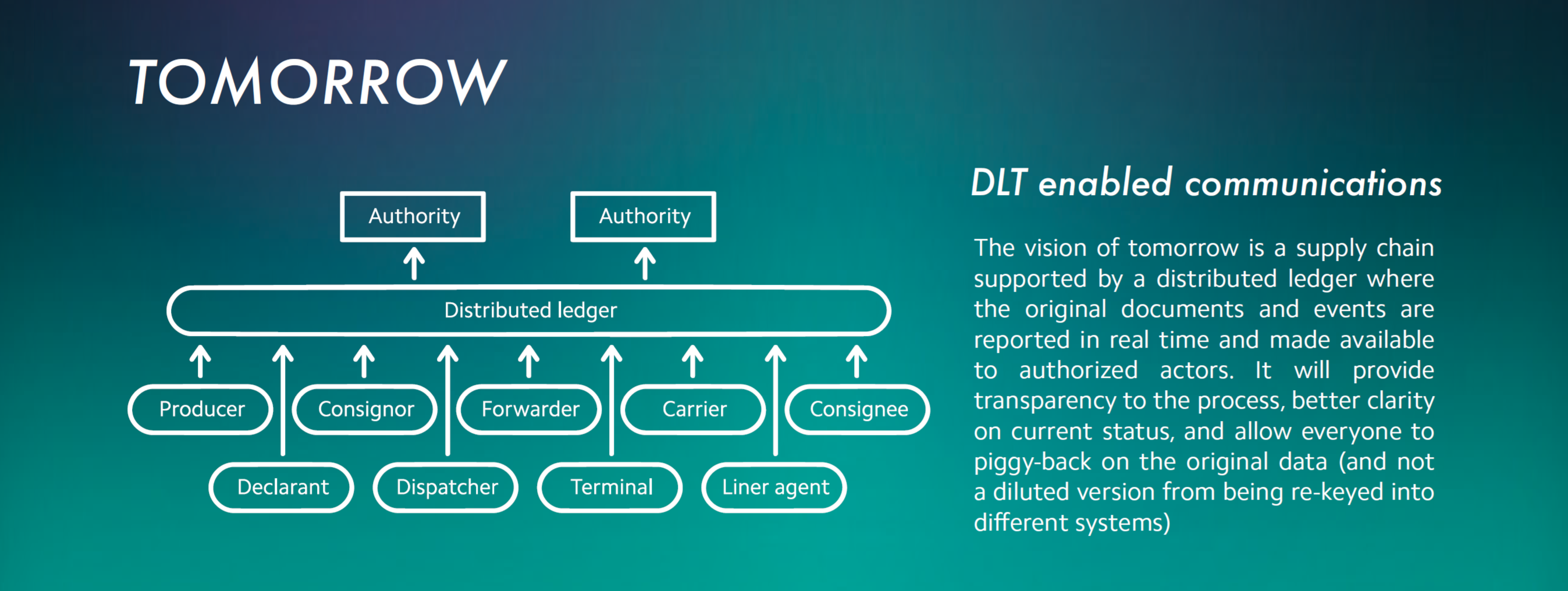
The promise of DLT is to set data free from proprietary actors’ systems and formats to be available on demand and in response to any event. Despite the increased sharing availability introduced by DLTs, data will still only be available to approved authorities or businesses. This would allow not only for efficiency gains, but also provide a broad range of opportunities for innovation and new data-driven services and business models.
TRADE FACILITATION — TOWARDS A PAPERLESS TRADE SYSTEM
A global trade deal went live on 22nd February 2017 to smooth customs procedures and cut red tape at the border. You may not have heard much about this new World Trade Organization (WTO) Trade Facilitation Agreement (or TFA). However on the web it’s eclipsed by the Star Wars episodeThe Force Awakens, which has the same three-letter-acronym.
Through the TFA, governments have agreed to update cross-border customs procedures to help speed up the processing and clearance of goods. Estimates are that, if implemented, this more agile process can increase the global GDP with 5% — only using current technology and, only focusing on some of the processes. This provides a very interesting benchmark for the real impact that distributed ledger technology can deliver to the world!
Digitization and sharing of a number of important trade documents, including Certificate of Origin, Phytosanitary Certificate etc., are currently being tested and the role of DLTs investigated in facilitating their realtime secure access.
However, availability of new DLTs technologies, such as IOTA, urges to support a sector dominated by a large volume of transactions. Traditional blockchain technologies are not build to handle the needs of international trade, as they don’t scale well and the millions of transactions in daily trade will be very costly on the overall decentralized infrastructure. IOTA Tangle is well-suited to this domain, given it scales and transactions are feeless. This means that even zero-value transactions can be used to secure integrity of exchanged data. As a result, new business models will emerge focused on the value of the exchanged information, rather than cost recovery of the deployed infrastructure. Furthermore, the high end-to-end security level introduced by the IOTA Masked Authenticated Message (MAM) protocol and its ability to tailor authorized access rights, make it a good fit to build tomorrow’s trade facilitation systems. With the free access to the IOTA open source code and demo-models, it is relatively easy and low cost to get started. Governments, customs, trade associations can gain experience about how to use the technology (which is actually the easier part of a final solution). It provides a starting point to understand what paradigm shift is required in order to achieve true innovation, including procedure changes and regulatory implications. The IOTA Foundation will help to support you through this journey.
Take a look at how IOTA will impact the future of the supply chain:
The video provides a glimpse into some of the key functionalities that can be currently developed using IOTA. In the next blogpost, in January, we will share concrete use cases. We have built a demo that showcases how trade facilitation processes can be solved with IOTA and we have built a POC with a company to track reusable assets. Both cases will come with Blueprints that will guide any IT expert to understand how easy it would be to integrate IOTA, and SW developers to find all the technical information on how to replicate and deploy the developed solutions into other use cases.
For more information about IOTA technology in the supply chain, please visit: iota.org/supplychain

